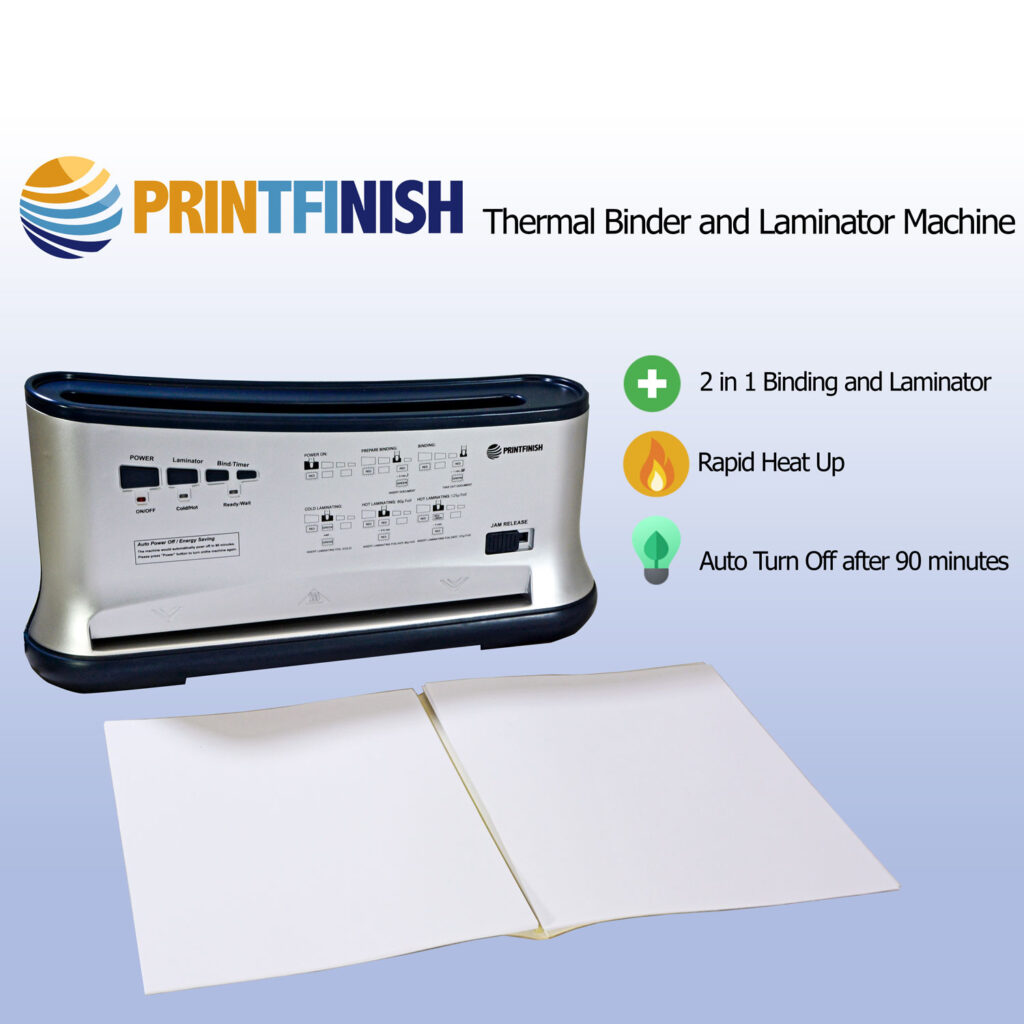
Importance of Lamination in Printed Products
In print, the finishing process transforms a project from an ordinary piece of paper into something polished, professional, and impactful. Among the various finishing techniques used to enhance and protect printed materials, lamination stands out as one of the most crucial. Lamination, the process of applying a thin layer of plastic film to the surface of printed material, serves both functional and aesthetic purposes. This technique improves the durability of the printed material and enhances its appearance, making it more visually appealing. In this article, we will explore the importance of lamination in the print finishing process and the multiple benefits it offers.
What is Lamination?
Lamination is a process in which a thin layer of plastic film is applied to the surface of printed materials to enhance their durability and appearance. This protective coating shields the material from damage caused by moisture, dirt, and handling, while also preventing fading, tearing, and smudging. Lamination can be done with different finishes—such as gloss, matte, or soft-touch—each providing distinct aesthetic and tactile qualities. In addition to protection, lamination improves the functionality and professional look of printed materials, making them longer-lasting and visually appealing.
Importance of Laminating Printed Products
1. Protection and Durability
One of the primary reasons for laminating printed materials is to protect them from wear and tear. Printed materials are often handled, and exposed to moisture, sunlight, dirt, and other environmental factors that can degrade their quality over time. By adding a layer of lamination, the printed piece is shielded from these elements, making it more resistant to fading, tearing, smudging, and staining. This is especially important for items such as menus, brochures, business cards, and educational materials that are frequently touched or used in environments where they could easily be damaged.
Lamination also makes the material waterproof, which is particularly useful for outdoor signs, maps, or any print products that may be exposed to water. Without lamination, even a slight spill or moisture in the air could ruin the print. Laminating a printed piece extends its lifespan significantly, ensuring that it remains in good condition long after its initial use. This is particularly valuable in industries where documents and printed materials need to withstand long periods of handling and usage.
2. Enhanced Appearance
Lamination not only protects but also enhances the appearance of printed materials. The thin plastic coating adds a smooth, polished finish that elevates the overall quality of the product. There are different types of lamination finishes available, each offering a unique effect:
Gloss Lamination gives printed materials a shiny, vibrant finish. It enhances the colors and gives images more contrast and depth, making them more eye-catching and visually striking. Gloss lamination is often used for marketing materials such as flyers, posters, and product packaging, where attention-grabbing visuals are essential.
Matte Lamination provides a more subtle, elegant finish. While it doesn’t reflect light like gloss lamination, it adds a soft, sophisticated look that works well for materials where a more understated appearance is desired. Matte lamination also has the added benefit of being resistant to fingerprints and smudges, making it an excellent choice for menus, catalogs, or any material that will be handled frequently.
Silk or Soft-Touch Lamination offers a luxurious, velvety feel that enhances the tactile experience of the printed product. This finish is often used for high-end brochures, business cards, and presentation folders, where the sensory experience of the print is just as important as its visual appeal.
3. Cost-Effectiveness
Although lamination adds to the production cost of printed materials, it is often a cost-effective investment in the long run. By protecting the material from damage, lamination reduces the need for frequent reprints. This is especially important for businesses that distribute large quantities of printed materials such as menus, instruction manuals, and business cards. Instead of having to replace damaged or worn-out items regularly, businesses can rely on laminated materials to last much longer, saving both time and money.
Additionally, laminated materials tend to maintain their professional appearance over time, which reflects positively on the brand or business using them. Materials that look worn or faded can give off an unprofessional image, which can be detrimental to a company’s reputation. Lamination ensures that printed materials maintain their original quality and aesthetics, helping businesses maintain a polished and consistent brand image.
4. Improved Functionality
Lamination can also improve the functionality of printed materials. For example, laminated documents can be written on with dry-erase markers and then wiped clean, making them ideal for reusable signs, charts, and other materials that require frequent updates. This makes lamination an excellent choice for educational materials, where teachers and students may need to write on documents repeatedly.
Lamination also adds stiffness to printed pieces, giving them a sturdier and more substantial feel. This is particularly useful for materials like business cards, certificates, and report covers, where a more rigid, durable material is preferred. Sturdiness not only enhances the material’s appearance but also its functionality, ensuring that it holds up well over time.
5. Brand Perception and Professionalism
Laminated print materials exude a sense of professionalism and attention to detail. When a company or organization presents laminated business cards, brochures, or marketing materials, it sends a message of quality and care. This perception can significantly influence how customers view a brand. Lamination helps businesses make a lasting impression on clients, partners, and stakeholders by demonstrating a commitment to excellence in both presentation and durability.
Moreover, lamination can give marketing materials a competitive edge. In industries where print materials play a critical role in attracting customers—such as real estate, hospitality, and retail—having high-quality, laminated materials can differentiate a business from its competitors. Customers are more likely to remember and engage with materials that feel and look professional.
6. Environmental Considerations
As the world becomes more environmentally conscious, many businesses are concerned about the sustainability of their print materials. While traditional lamination involves the use of plastic, which raises concerns about environmental impact, there are now eco-friendly laminating options available. These biodegradable laminating films are made from renewable resources and can decompose more easily than conventional plastic. This allows businesses to enjoy the benefits of lamination while reducing their environmental footprint.
Lamination plays an indispensable role in the print finishing process, offering a range of benefits that enhance both the durability and appearance of printed materials. From protecting printed products against damage to elevating their visual and tactile appeal, lamination ensures that printed materials remain functional and aesthetically pleasing for longer periods. Whether for business cards, brochures, or educational tools, lamination is a valuable investment that enhances the quality, professionalism, and longevity of printed materials. As businesses continue to rely on print for marketing, communication, and branding, the importance of lamination in ensuring a polished and durable final product cannot be overstated.
If you’re a business owner in the office, binding, printing or publishing industry, and you’re seeking the best print-finishing machine to enhance your operations, look no further. Our selection of high-quality equipment is designed to meet your specific needs. Whether you require the durability of binding, the versatility of cutters, or the cost-effective benefits of large-format printers, we have the right binding solution for you. Contact us today to explore our range of binding machines and take your business to the next level.









